As a high school science teacher, I’m always looking for ways to inspire my students with real-world science and deepen their understanding of our planet. The Polar STEAM Educator Fellowship has been an extraordinary opportunity to merge my passion for polar environments with my teaching. Through this year-long virtual collaboration with T.J. Fudge, a research scientist at the University of Washington, I’ve been immersed in cutting-edge research on ice cores, allowing me to bring current polar science research to my students.
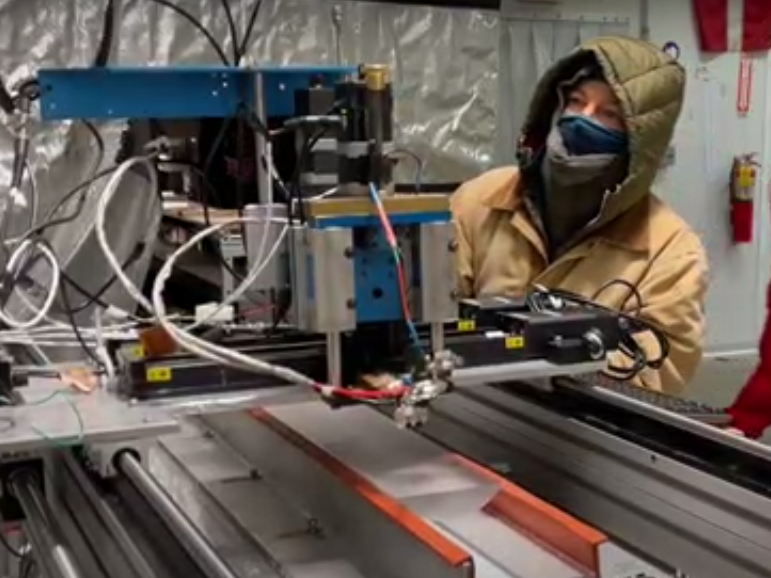
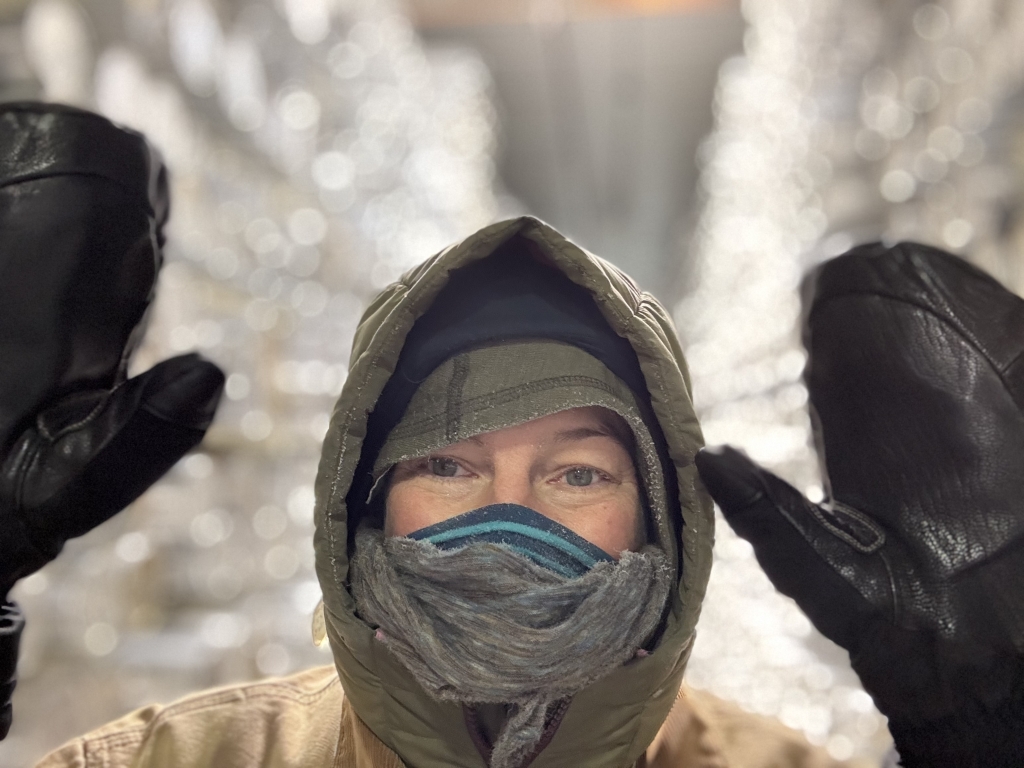
Our collaboration began organically during our initial Zoom session when T.J. noticed a tree ring cross-section in the background of my classroom. He drew an intriguing parallel between tree rings and ice cores, both of which reveal valuable information about past climates. T.J.’s expertise in paleoclimate and his focus on enhancing methods for reconstructing historical climates from ice core samples provided an ideal foundation for our collaborative work.
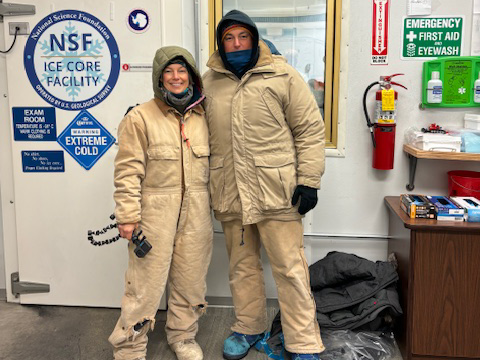
A particularly memorable aspect of this fellowship was my visit to the NSF Ice Core Facility in Denver where TJ and his team were processing Ice Cores as part of his work with the NSF COLDEX Science and Technology Center project. While Denver’s temperatures approached 100 degrees, I found myself working in the ice core facility’s -20℃ to -40℃ environment, alongside T.J. and researchers from a variety of other institutes. Dressed in winter gear, I joined the electrical conductivity measurement (EMC) crew in observing and processing the ice cores. Walking among the rows and rows of ice core samples, totaling an impressive 25,000 meters from Greenland, Antarctica, and North America, was awe-inspiring. Each sample, meticulously stored and cataloged, represents a slice of Earth’s climatic history
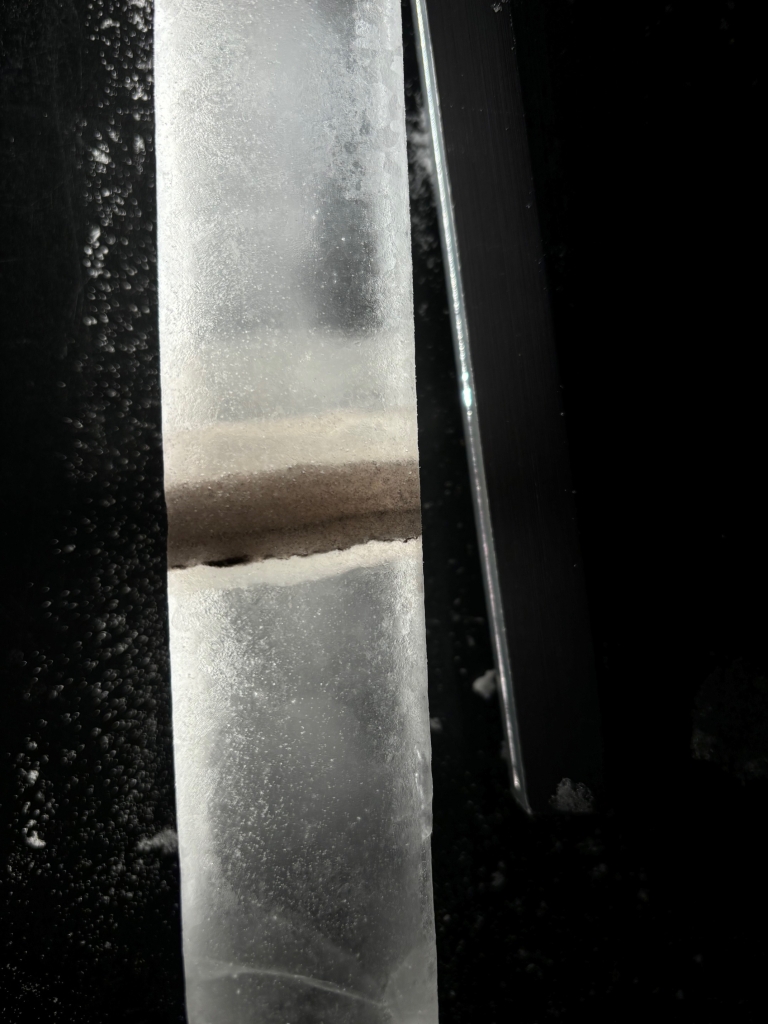
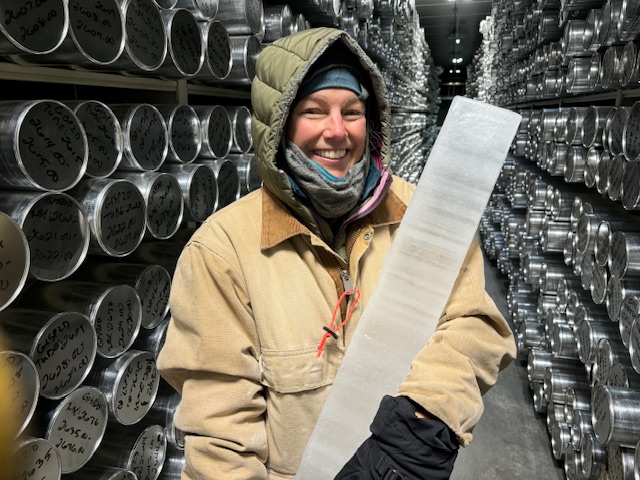
During this fellowship, I observed firsthand how scientists use advanced techniques to study gases and chemicals trapped in ice and infer past global temperatures. From photographing crystal structures and conducting hyperspectral imaging to performing electrical conductivity tests, I witnessed how ice cores reveal both long-term climate trends and short-term climatic events. Handling a 20,000-year-old ice core, with its distinct annual layers, was awe-inspiring. The layers, clear from summer snowfalls and cloudy from winter compaction, create a timeline of Earth’s climate. Atmospheric gases trapped in tiny bubbles offer a snapshot of ancient atmospheres. One particularly striking sample we pulled out of storage contained a visible band of volcanic ash, marking a significant historical eruption. At the Ice Core Facility and in our Zoom calls, T.J. and I discussed the relationship between temperature and carbon dioxide, the insights gases preserved in ice cores offer about past climates, and the technologies used in analyzing these cores. We delved into the nature of ice core layers, exploring whether they are always neatly stacked with the youngest layers on top and the oldest at the bottom, and the factors that influence layer formation and disruption.
An unexpected highlight of my visit was hearing the sounds of gases being released as ice melted, recorded for a podcast by a postdoc fellow. As I listened through headphones, the visceral sounds connected deeply with the visual of bubbles escaping and rising in the water. This sensory experience, combined with a video I had previously recorded of ice swaying on a puddle of water due to escaping gases, vividly connects ancient atmospheric conditions to physical properties and processes.
As we develop our educational resource, we’ll engage students with sensory experiences before they graph atmospheric data from ice cores. We aim to highlight the rigorous work scientists do to ensure reliable data, fostering confidence in climate and polar science. We may include interviews with T.J. to give students direct insights from a polar researcher, enhancing their understanding of ice core science. Our goal is to immerse students in the scientific process, helping them analyze data and build trust in science.



